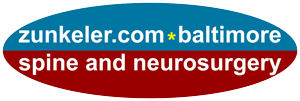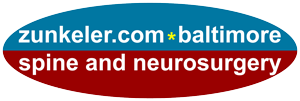Watercolor of Lake Constance painted by Brigitte Zünkeler, my mother.
A healthy brain
More than any other organ or part of our body, our brain defines who we are. Our consciousness, thoughts, feelings, intentions, fears, hopes, and intellect are encoded in the many millions of networked nerve cells that make up our brain. Our brain is closely connected through our 24 cranial nerves (12 on each side) and the spinal cord to the rest of our body, which it controls and from which it receives messages about our surroundings. As we age, our brain, like the rest of our body, undergoes certain changes. For example, our brain volume decreases (“shrinks”) by 5% every decade after age 50, which is expected and normal. However, some people experience excessive brain volume loss (which is called brain atrophy). This has been associated with problems with memory, speech, and other cognitive functions. The loss of brain volume can be accelerated by cardiovascular disease (e.g. high blood pressure, uncontrolled blood sugar levels, high cholesterol, hardening of the arteries, and heart disease), stroke (loss of blood flow to part of the brain or bleeding into the brain), obesity, alcohol excess, and tobacco use. Although we cannot alter our inherited genetic risks of certain familial diseases such as Alzheimer dementia or parkinsonism, we can change our lifestyle. Some scientists believes that leading a healthier life alters how our “bad” genes are expressed and improves health even in people with significant genetic risk factors. People who are interested in keeping their brains healthy beyond age 50 should exercise regularly, eat a balanced diet, maintain a healthy weight, and avoid all tobacco products and excessive alcohol consumption. It is also helpful to increase our awareness and to follow reasonable safety guidelines and other precautionary measures to reduce the risk of accidental head injuries from falls or bike or car accidents (for example, wear a bike helmet while riding a bike and a seat belt when in a car).
Stroke
Stroke is a significant health problem worldwide and in the United States and results in a significant burden on society, referred to as “the dreaded Ds”. In the United States, stroke is the the leading cause of chronic disability, the second leading cause of dementia (Alzheimer disease is #1), and the fourth leading cause of death (heart disease, cancer, and lower respiratory diseases are #1-3). Approximately 3% (about 7 million people) of the currently living U.S. population have suffered a stroke at some time, and about 600,000 new strokes occur each year. In other countries, strokes are even more of a problem that in the United States.
Strokes can occur at any age, but our stroke risk increases as we age and doubles each decade after age 55. Warning signs sometimes occur before a major stroke. A transient ischemic attack (TIA) is a neurological deficit of sudden onset that lasts up to 24 hours and involves a part of the brain or the retina (the membrane in the back of the eyeball that allows us to see). Because symptoms may be relatively mild, some people do not realize that they are having a TIA and do not seek help.
Stroke risk factors that we cannot do anything about are called non-modifiable risk factors and include age, gender, and ethnicity. In contrast, stroke risk factors that we, aided by our health-care providers, can change or treat are called modifiable risk factors and include:
- hypertension (high blood pressure)
- tobacco use
- high cholesterol
- moderate-to-high alcohol consumption
- diabetes mellitus (particularly if poorly controlled)
- atrial fibrillation
- physical inactivity
- carotid artery stenosis.
Currently, experts agree that the best options to prevent stroke are lifestyle changes and working with health-care providers to effectively treat conditions such as diabetes, high cholesterol, and atrial fibrillation.
Head injury (traumatic brain injury and concussion)
A traumatic brain injury (TBI) is any injury that affects the normal function of the brain. Mild head injuries (concussions) can be caused by a bump on the head or a forceful to-and-fro motion of the head, even without a true head impact. Moderate and severe head injuries are caused by more significant trauma and are classified based on the symptoms and findings, including the duration of unconsciousness, the patient’s ability to move and speak, and the ability of the patient’s pupils to react to light.
Although children (newborn to 4 years old) and adolescents (particularly those 15-19 years old) have a high risk of head injury, adults 75 years of age and older have the greatest risk of sustaining a head injury leading to hospitalizations and death. According to a 2015 report from the Centers of Disease Control and Prevention (CDC), the leading causes of non-fatal TBIs are falls (35%), motor vehicle accidents (17%), and blows from or against an object (17%).
Recognizing that head injuries represent a significant risk for people over the age of 50 (particularly those age 75 or older) is only the first step. Injury awareness and prevention are the next steps and include:
- paying attention while negotiating stairs at home and at work
- wearing appropriate footwear to avoid slips and falls
- ensuring that ladders and stepladders are in good working order and positioned safely (and away from power lines)
- wearing a helmet while biking
- staying alert and wearing a seat belt when driving.
Memory problems
Alzheimer disease and related dementias are common degenerative diseases of the brain in the 50+ population and are currently incurable. According to the CDC, 1.6% of the U.S. population (5 million people) suffered from dementia in 2014. The trend is increasing, and computer modeling has projected that 3.3% of the U.S. population will suffer from dementia in 2060. There are ethnic disparities, and African Americans and Hispanics have a greater risk of Alzheimer or other dementias.
Early diagnosis of dementia is important to allow affected individuals and their caregivers to make preparations for future health-care needs, including long-term care services and emotional support. Some medications are available that temporarily improve the early effects of memory loss. Individuals and their partners who suspect that they are dealing with memory difficulties should turn to their medical providers for early diagnosis and treatment.
Normal pressure hydrocephalus (NPH) is a potentially curable condition that can present with memory problems, unsteadiness gait, and urine incontinence . NPH often improves after placement of a ventriculoperitoneal shunt, a relatively small neurosurgical procedure.
Headache
Headaches are extremely common in adults. In any given year, 50% of the population will experience a headache; 90% of the population will experience a headache episode at some time during their lifetime. Of those headache episodes, tension headaches are the most common (more common than migraine headaches).
Chronic headaches (headaches for more than 15 days a month) are experienced by 3% of the population and can be severely disabling.
Migraine headaches are more common in women than in men. Twin studies have found a genetic basis for migraine headaches, but the genetic inheritance is complex and involves several genes that determine how easily a migraine is triggered.
People who suffer from migraines also have a higher chance than the general population to suffer from anxiety and mood disorders, allergies, chronic pain disorders, and epilepsy.
The good news is that, overall, the frequency of migraine episodes tend to lessen after age 50.
Sleep disturbance
One of the effects of aging is that our sleep patterns change. We generally need less sleep, find it more difficult to fall asleep, and wake up more easily than when we were younger.
Insomnia is a relatively common complaint in the 50+ population and is often related to:
- caffeine use
- tobacco use
- alcohol use
- sleep habits (working late, using the computer late, and watching TV late)
- other medical conditions, including obesity and sleep apnea
- psychological factors (job or relationship stress).
Sleep fragmentation and inability to maintain blood oxygenation at night (because of sleep apnea) may result in daytime sleepiness, headaches, and decreased attention, all of which increase the risk for injury.
Individuals who experience sleep-related problems should first try to improve their sleep habits. If sleep problems persist, medical providers can be consulted. Hypnotics (medications that promote sleep) are available for individuals who experience poor sleep quality, but strategies that do not involve taking hypnotic medications should be tried first. Hypnotic medications increase the chance of daytime sleepiness and falls or other injuries in individuals over 50.
OFFICE HOURS
| Monday – Friday | 8:30 – 4:30 |
| Saturday | closed |
| Sunday | closed |

